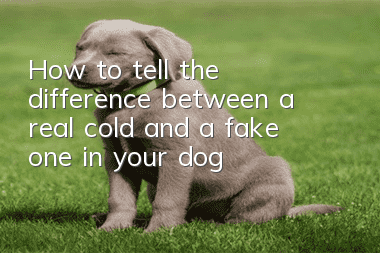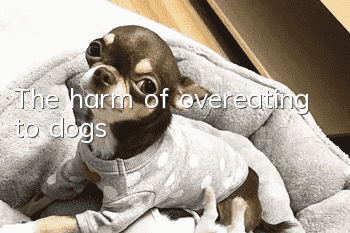How to tell the difference between a real cold and a fake one in your dog?

The early symptoms of many infectious diseases in dogs are very similar to those of a cold. For example, the early symptoms of warm fever in dogs and the early symptoms of parvovirus disease are generally clinically characterized by elevated body temperature, sneezing, blurry eyes, and watery nasal discharge. Due to lack of experience, some owners tend to treat several common serious infectious diseases as colds, thus causing misdiagnosis and wrong treatment measures, leading to serious consequences of the death of their dogs.
The main symptoms of a cold in dogs:
The sick dog is depressed, has loss of appetite or has no appetite, has flushed conjunctiva, and has shy and tearful eyes. There is a cough, pus-like nasal mucus, accelerated breathing, elevated body temperature, chills and trembling. If not treated in time, it may be complicated by other diseases such as tracheitis and bronchitis. There is also influenza, which is caused by a virus and occurs in epidemic form. The main manifestation is high fever. In addition to cold symptoms, it is often accompanied by conjunctivitis and intestinal catarrh.
Real cold in dogs is a systemic symptom mainly characterized by inflammation of the upper respiratory tract mucosa. Colds usually occur in early spring, late autumn and when the climate changes suddenly. Most of the causes are due to sudden cold stimulation, such as being hit by strong winds in winter, sleeping outdoors in cold seasons, being exposed to rain, and not drying the dog's coat in time after bathing.
Fake colds in dogs are generally more common in the early stages of infectious diseases, but in fact there are other special symptoms. When a dog is infected with the canine distemper virus and becomes ill, the body temperature is generally bidirectional, with the body temperature rising and falling. Most sick dogs have symptoms of eye droppings. In the early stage of parvovirus, it is mainly accompanied by major symptoms such as vomiting and diarrhea, and usually vomiting first and then diarrhea. As long as the owner can observe carefully, he can still distinguish and judge.
- What causes dogs to have bad mouth and how to deal with it?
- What medicine is better for dogs to take if they have a cold?
- What should I do if my dog has gastroenteritis? Symptoms of gastroenteritis in dogs
- Symptoms, causes and dangers of intestinal obstruction in dogs and cats!
- What’s wrong with a dog’s red and swollen eyes?
- How to treat dogs suffering from canine distemper
- What are the benefits of eating shrimp heads for German Shepherds?
- How to get your dog to rest quietly
- Why is the puppy running around like crazy?
- Causes and treatments of emphysema in dogs



